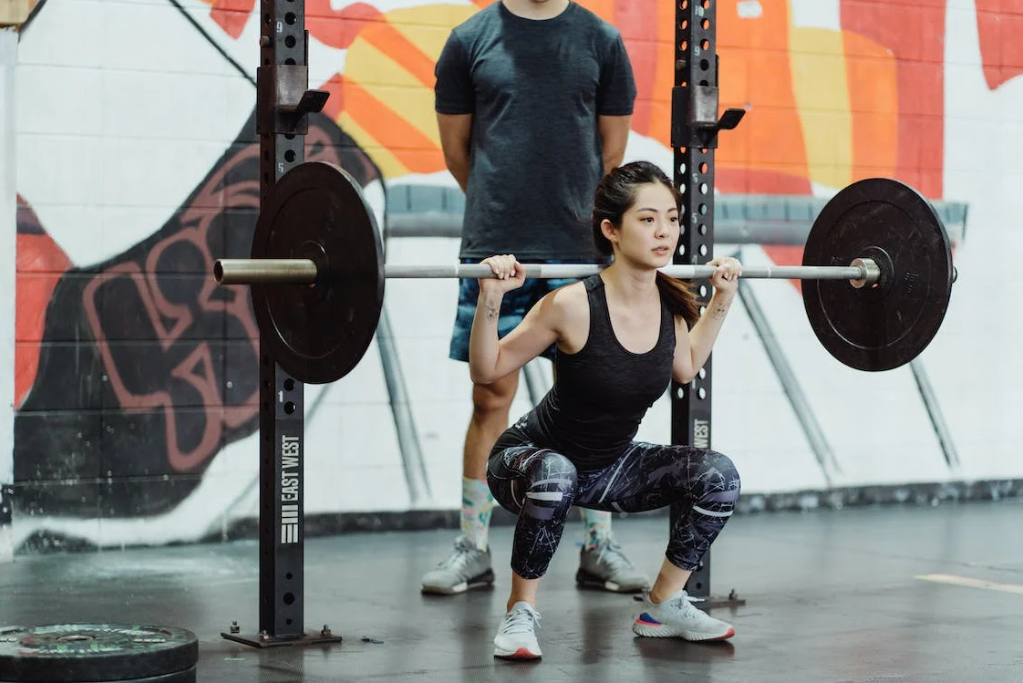
When you’re lifting weights, it’s important to have the correct range of motion on any of your movements.
However, range of motion becomes especially critical for those who do squats. Your range of motion is how much your body moves during the movement. When talking in terms of squats, it usually means how low you’re squatting.
Squats require a specific range of depth in order to maximize muscle engagement but without risking injuries in other nearby areas.
Here’s everything you need to know about depth and range of motion.

Why it’s important to have a good range of motion
Like I mentioned earlier, your range of motion correlates a lot to how well you can engage your muscles during the movement.
To a certain point, the more depth you reach on your squats, the better engagement you’ll have in your muscles.
You don’t want to be the person who loads a ton of weight on the bar and only moves about two inches to perform their squat.
Sure, this makes you feel like you’re squatting a lot of weight, but what good is it if you’re getting no muscle engagement?
Instead, it’s much more efficient to decrease the weight and focus on squatting lower.
It’s important to have a good range of motion while squatting, while also maintaining proper squat form. Squat low and slow with proper form and increase your time under tension.
This will allow for maximum stress, engagement, and tears on your muscles.
How to avoid injuries while striving for depth
Although hitting depth on your squats is usually good, past a certain point depth can become more dangerous.
Once you get past a certain point and start squatting too low, you put a lot of additional stress on you knees and hips. This dramatically increases your risk of knee and hip injuries as well as muscle strains and tears.
If you want to avoid injury while also hitting good depth, a good rule of thumb is to not squat past parallel.
Parallel is when your femurs are parallel to the ground.
Of course, still this can vary for everyone as everyone has a different bone structure in their legs.
It’s important to determine what depth feels good for you and your joints, bones, and muscles. You shouldn’t be feeling any pain while you’re squatting.
How to increase range of motion during squats
If you want to increase your depth and range of motion while you’re squatting, you need to consider how each part of your body works together to perform a squat.
By doing this, you can start looking at how to improve and strengthen each part that contributes to the motion in order to improve how well you can squat.
Here are some things you can do to improve your range of motion:
Increase hip mobility
Your hips are a major factor in how well you can perform a squat. They are the major joint connecting your glutes to your legs.
Having tight hips will make it extremely difficult to squat low. Or really even to squat at all.
If your hips are tight, you won’t be able to sit down as far as if they were loose. Your hips will resist as you try and sit your glutes closer to the floor. This will prevent any depth while you’re squatting.
Additionally, your hips help stabilize your body when you’re squatting heavy weight. They play a major role in protecting your lower back and your knees from injury during the movement.
If your hips are stiff or weak, then they won’t be able to support you or the weight while you’re squatting. This will put unnecessary stress on your back and knees, increasing your risk for injury and preventing you from squatting low.
To help avoid this issue, there are plenty of stretches and hip opening, mobility exercises you can do to increase your hip mobility and strength.
Incorporating these into your routine will not only help you squat better but also decrease your risk of knee, hip, and back injuries.
Increase ankle mobility
Again, much like having hip mobility is essential for squat range of motion, so is ankle mobility.
Your ankles are what allow your knees to move in a fluid motion. Having mobile ankles is essential for your knees to be able to move properly forward, over your toes.
Which allows you to reach a further depth in your squat.
One of my favorite ways to increase ankle mobility is to squat down all the way to the ground, and, keeping your feet flat on the ground, practice moving your body in circular motions.
Your feet should stay planted where the movement comes from your ankles, practice moving your ankle joint in circles.
This will help your ankles loosen up and increase their mobility. Which will allow you to squat lower.
Regularly stretch your quads, hamstrings, and calves
In order to squat in a full range of motion, your working muscles can’t be tight.
If they’re tight, you greatly increase your risk of injury and dramatically decrease your range of motion. Think about it, if you’re muscles can’t stretch as far as they need to, then you won’t be able to comfortably perform an exercise that requires them to stretch.
By regularly stretching your quads, hamstrings, and calves, you’ll have much more mobility in these muscles. Allowing you to perform a much more fluid squatting motion.
Once these muscles can move better, you’re be able to squat much lower without them resisting and preventing the movement.
Strengthen your core

Your core is what provides stability for you while you’re squatting. Your core includes your abs, lower back, and sides.
In order to hold the bar on your back and keep yourself upright while you’re squatting, you need to engage and brace your core. To do this though, your core needs to be strong enough.
As you go lower and lower on your squats, your body relies more and more on your core to keep you stabilized.
The stronger your core is, the lower you can go and the better range of motion you can have.
For me personally, when my core wasn’t strong enough to support me while I was squatting, I noticed that I couldn’t squat too much without my front bending forward.
As I would try and squat lower, I couldn’t stand up from the squat without bending forward and struggling to lift the weight. Even though my legs could support the weight, my core couldn’t.
As a result, I needed to either lower the weight or squat with a smaller range of motion. Neither of which were optimal for my gains.
Because of this, it’s important to strengthen your core if you want to be able to support yourself when you’re squatting heavy and with depth.
Warm up before your workout
If you’re coming to the gym and trying to reach your maximum range of motion while you’re cold and stiff, you most likely won’t be very successful.
No matter how flexible or how much mobility you have, your muscles will always move better after warming them up.
Before you jump right into your exercises, do some dynamic warm ups, stretches, and mobility exercises. This will get your hips, ankles, and muscles warmed up and engaged.
Then, they’ll be able to more fluidly reach the range of motion you need them to reach. Without any stiffness or immobility.
Takeaways
It’s important to strive for depth and increase your range of motion on your squats. This will help you maximize muscle engagement and stimulate the most muscle growth.
It’s essential to look at improving each part of your body that will contribute to the motion. Whether that be your hips, ankles, leg muscles, or core.
By doing this, you will allow your body to move as efficiently as possible, allowing you to safely increase your range of motion.
More posts on women’s weightlifting: